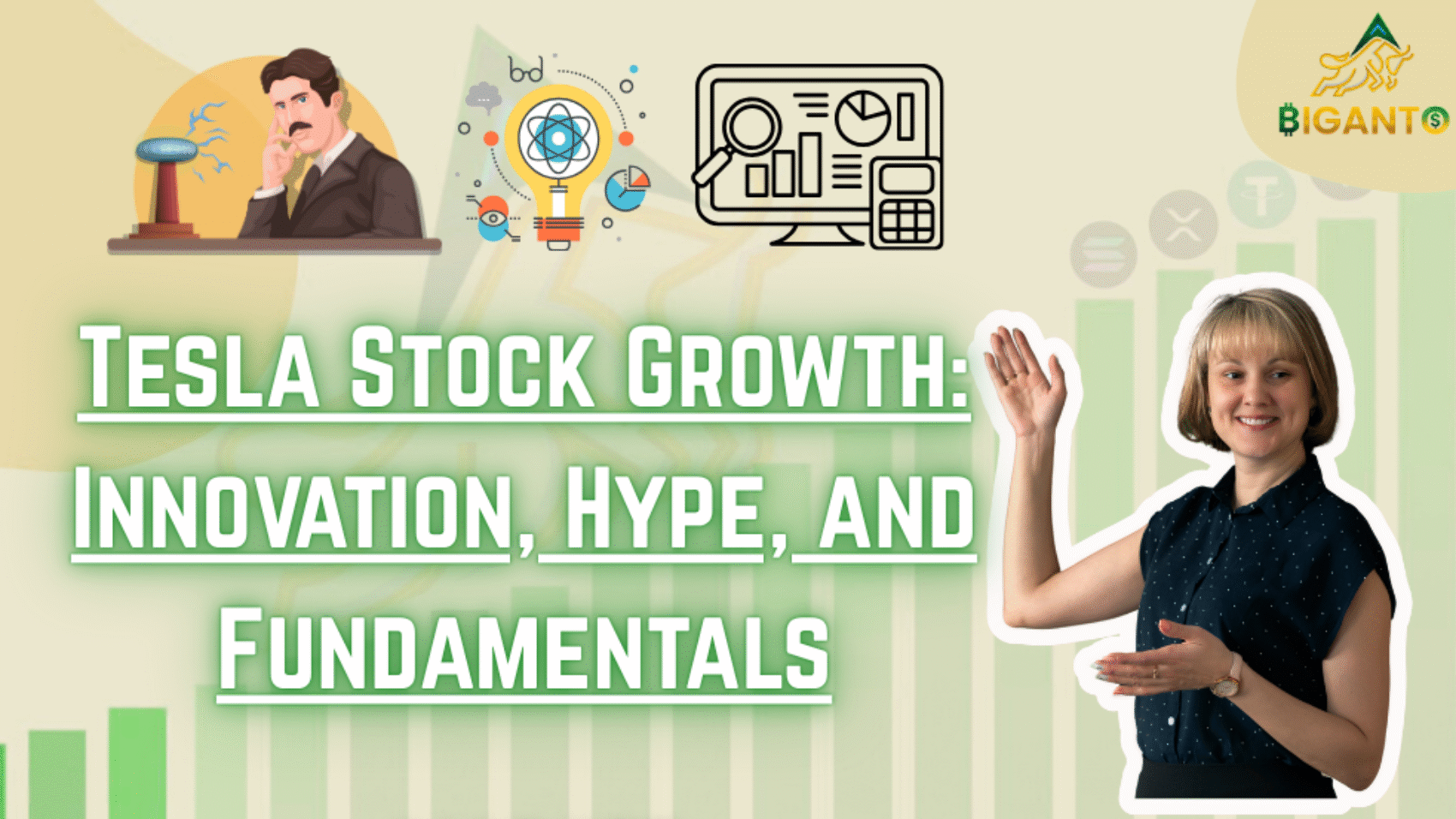Tesla is more than just a car or energy company — it’s a brand built on relentless innovation, driven by the bold and unconventional leadership of Elon Musk.
Two engineers, Martin Eberhard and Marc Tarpenning, founded Tesla and called it Tesla Motors. Elon Musk, a co-founder of PayPal, was impressed by their efforts and contributed millions of dollars in the initial investment rounds. Before becoming the CEO, Musk finally rose to the position of chair of the firm.
One of the top businesses in the luxury car and clean energy sectors is Tesla. In actuality, Tesla has distinguished itself in the premium EV market with outstanding design and cutting-edge technology.
When Tesla launched their IPO on June 29, 2010, its IPO was priced at $17, but it closed the day at $23.89 — a 40% surge. Since then, the journey has been extraordinary.
With its stock hovering at about $500 a share in August 2020, In August 2022, Tesla announced a second stock split, at three to one.
Tesla announced a five-for-one stock split. The board of directors approved and declared a common stock split in the form of a stock dividend. Tesla said it made the decision to “make stock ownership more accessible to employees and investors”.
Innovation –
Tesla’s biggest strength — and the main reason behind its massive stock growth — is its constant focus on innovation
1. Electric Vehicle (EV) Technology:
Tesla uses technologies like autopilot program, which is a radical innovation in the auto motive sector. Tesla has emphasized on battery innovation that gives potential power to its vehicles engines. At the same time, Tesla’s electric motors deliver instant torque and fast acceleration, giving its cars a smooth yet thrilling driving experience. To support this on a large scale,
2. Battery Technology:
Battery pack innovation makes Tesla’s products more affordable. This allows Tesla cars to go longer distances on a single charge and recharge faster than most competitors. Tesla built to improve its production process, it established more Gigafactories, such as one in Nevadaand other in New York. Not only this, but it also established Gigafactory in China, andis establishing others in different parts of the world to attain economies of scale, as wellas produce lower-priced products.
3. Energy and Software:
Tesla isn’t just a car company. Tesla’s energy generation and storage division offering products like solar roofs and Powerwall. Its Autopilot and Full Self-Driving (FSD) software adds tech appeal and recurring income. The promise of “Robotaxis” and a future where vehicles generate income for their owners is a significant speculative driver for the stock.
What’s the Hype Around Tesla?
Tesla is much more than just a car or energy company — it’s a powerful brand built on innovation, bold ideas, and the unique leadership of Elon Musk. Musk’s track record of launching successful ventures like PayPal, SpaceX, and The Boring Company adds to the trust and excitement around Tesla. His ambitious vision, from sending humans to Mars to building futuristic products like the Cybertruck, constantly keeps Tesla in the news. Musk’s active social media presence and unconventional style attract massive attention and have helped build a cult-like following among retail investors, especially on platforms like Reddit and X (formerly Twitter). Tesla is widely perceived as a disruptor, challenging established industries and leading the charge towards a sustainable future.
This hype has at times pushed Tesla’s stock price far beyond what traditional valuation models would suggest. Events like the 5-for-1 stock split in 2020 and Tesla’s inclusion in the S&P 500 index further boosted investor interest. These moves made Tesla shares more affordable for small investors and brought in large institutional money, fueling its rise even more.
Fundamentals –
The Changing Financial Reality: The Fundamentals
Tesla’s stock has risen largely due to innovation and hype, but its financial foundation has also strengthened over time, albeit not without difficulties.
Increased Revenue and Business Growth
The primary drivers of Tesla’s revenue growth over the years have been an increase in vehicle deliveries as well as the company’s energy products and software, such as Full Self-Driving (FSD). With $96.8 billion in total revenue in 2024, Tesla demonstrated impressive top-line performance. But by Q1 2025, Tesla’s revenue had dropped 9% from the year before, suggesting that growth may be slowing down due to pressures on the world economy and growing competition from EVs.
Margin and Profitability
From a startup that was losing money to a reliably profitable business, Tesla has gone a long way. However, its margins have been under pressure in recent quarters. Tesla’s automotive gross margins dropped from their previous highs of 25–30% to about 16% as a result of having to lower vehicle prices in order to remain competitive and sustain sales. Adjusted earnings fell 40% in the first quarter of 2025, demonstrating that profitability is now more susceptible to changes in the market.
Manufacturing, Delivery, and Worldwide Presence
A major contributor to Tesla’s success has been its capacity to increase production at its factories in Fremont, Shanghai, Berlin, and Texas. Over 1.8 million vehicles were delivered by the company in 2023, but deliveries fell 13% in the first quarter of 2025, primarily as a result of increased competition, particularly from Chinese EV manufacturers like BYD and Nio, and decreased demand. Tesla’s short-term price swings and investor confidence are frequently impacted by delivery figures.
The valuation is still high.
Even with some slowdown in earnings, Tesla’s stock price continues to stay significantly above traditional automakers. As of mid-2025, Tesla’s forward price-to-earnings (P/E) ratio was still at 231x, a figure that implies high investor expectations – not just for car sales, but for future developments like Robotaxis, the Optimus humanoid robot, and additional software monetization. Compared to other automakers and even large IT businesses, there is a sharp contrast.
Financial Stability and the Balance Sheet
Notwithstanding recent difficulties with profitability, Tesla has had a healthy balance sheet and substantial cash reserves, which enable it to make significant investments in R&D, factory expansion, artificial intelligence, and the introduction of new products. Due to its strong financial position, Tesla is able to weather immediate difficulties while maintaining its commitment to long-term innovation.
The Interplay of Innovation, Hype, and Fundamentals – And the Road Ahead
Tesla’s stock performance is shaped by a powerful combination of innovation, hype, and financial fundamentals — each playing a different role in how the company is valued and perceived in the market.
Innovation as the Basis
From autonomous driving and artificial intelligence to electric vehicles and battery technology, Tesla’s unwavering commitment on innovation has created the foundation for its long-term appeal. Tesla would never have drawn such intense investor interest in the first place without this. For many shareholders, the future is kept alive by this state-of-the-art technology.
Increased Market Reactions Due to Hype
Tesla is distinct in the way that its core values are exaggerated by hype. Large stock rallies are frequently sparked by good news, such as record deliveries or quarterly earnings, because of high expectations and intense social media discussion. But the opposite is also true: since the stock is priced expecting near-perfection, any indications of weakness or missed targets could result in significant sell-offs.
Final Thoughts
A potent combination of innovation, hype, and improving fundamentals has propelled Tesla’s ascent. From renewable energy and artificial intelligence to electric cars, Tesla has revolutionized the automotive sector and amassed a devoted following of investors.
However, the business is currently dealing with increasing worldwide competition, slowing sales, and shrinking margins. The true test will be whether Tesla can make its audacious concepts—like Robotaxis and Optimus—profitable endeavors.
In the future, Tesla’s capacity to balance vision with execution will determine whether it can sustain its high valuation or if the excitement will eventually give way to reality.

